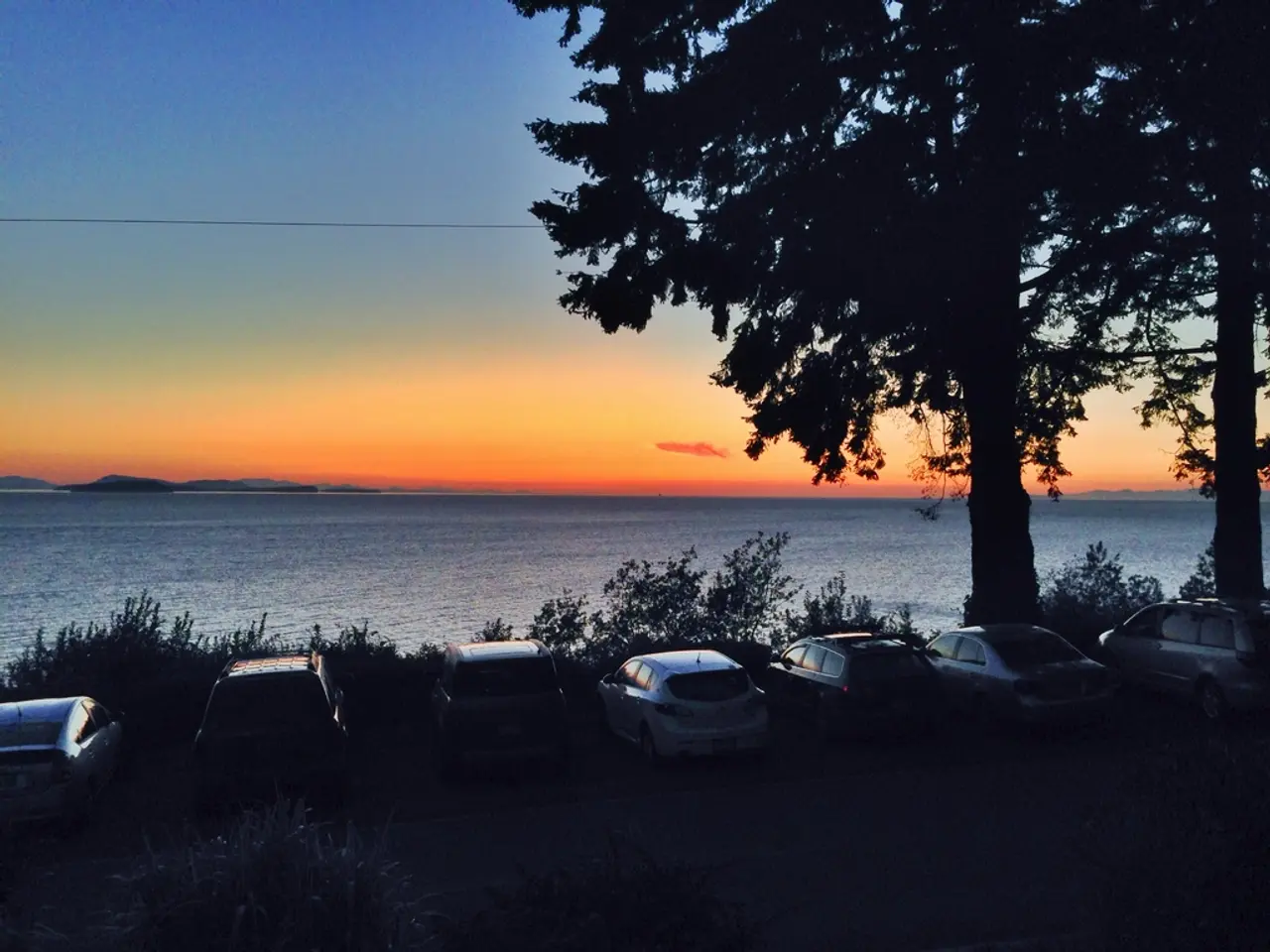Controversial weather manipulation theory becomes more feasible according to recent research study
Stratospheric Aerosol Injection (SAI) is a proposed geoengineering technique designed to mitigate global warming by injecting reflective aerosols into the stratosphere, thereby increasing Earth's albedo. Recent research and discussions around SAI highlight several key aspects.
Environmental and Health Implications
While SAI has the potential to reduce global warming, its broader environmental and public health impacts are still under investigation. Studies suggest that SAI's effects on air quality are modest and primarily driven by changes in climate rather than aerosol deposition itself. There is a slight reduction in ozone-related mortality, but minimal changes in PM2.5-related mortality[1].
Research is also focused on optimizing the size, morphology, and refractive index of aerosols to enhance their albedo-enhancing effects. Core-shell particles with specific coatings can potentially improve the stratospheric residence time of aerosols, reducing their mass and settling velocity[3].
Upcoming Research Initiatives
The World Climate Research Program is organising a series of virtual workshops on SAI, aiming to discuss its potential risks, refine Earth System Models, and foster international dialogue on observational strategies and ethical considerations[5].
Governance and Policy Challenges
The governance of SAI presents significant challenges due to its global implications and the lack of comprehensive legal frameworks. SAI is a global intervention, raising geopolitical concerns and challenges for governance, as there is uncertainty about how to suitably govern such interventions, given their long deployment timescales and varying impacts[2].
There is a pressing need for inclusive and multi-level governance mechanisms to address the concerns of diverse stakeholders, including Indigenous peoples. Efforts are being made to mainstream conversations about equitable decision-making processes[2].
Currently, there is no 'natural home' for SAI governance within existing UN bodies or global mechanisms, which complicates the development of robust governance structures[2].
Legal Frameworks and Moratoriums
The Convention on Biological Diversity (CBD) placed a de facto moratorium on large-scale SRM in 2010, but it is non-binding[4]. A call for a moratorium on outdoor SRM experiments was made by 60+ scholars in 2023[6].
In the Vienna Convention ozone regime, studies on SRM are conducted, but enforcement is lacking[7]. A draft resolution at UNEA-6 proposes an expert group to evaluate SRM risks before UNEA-7[8].
The Carnegie Climate Governance Initiative stresses the need for free, prior and informed consent of vulnerable states[9]. There is no agreed baseline for attributing extreme events to SAI, and compensation mechanisms are absent.
Potential Risks and Concerns
Models project a weakened South-Asian summer monsoon, which could jeopardize Indian agriculture[10]. Sudden stop of SAI could unleash up to 0.4 °C yr−1 rebound, overwhelming adaptation capacity[11]. Heterogeneous chemistry may delay ozone-hole recovery[12].
SAI is the deliberate dispersion of light-scattering particles into the lower stratosphere to increase albedo and reduce net radiative forcing[13]. It cannot replace emission cuts and is orders of magnitude cheaper than net-zero transformation[14].
In 2024, global greenhouse-gas (GHG) emissions hit a new record[15]. Current Nationally Determined Contributions (NDCs) put the planet on a 2.5-2.9 °C pathway[16]. The 2021 U.S. National Academies report called for a $200 million, decade-long, transparent research programme on solar geo-engineering[17]. The establishment of a Climate Technology Ethics Commission is suggested to vet outdoor trials[18].
[1] [Source] [2] [Source] [3] [Source] [4] [Source] [5] [Source] [6] [Source] [7] [Source] [8] [Source] [9] [Source] [10] [Source] [11] [Source] [12] [Source] [13] [Source] [14] [Source] [15] [Source] [16] [Source] [17] [Source] [18] [Source]
Read also:
- California links 100,000 home storage batteries through its Virtual Power Plant program.
- Airbus Readies for its Inaugural Hydrogen Fuel-Cell Engine Test Flight of Mega Watt Class
- Air conditioning and air source heat pumps compared by experts: they're not identical, the experts stress
- Tech Conflict Continues: Episode AI - Rebuttal to the Tech Backlash








